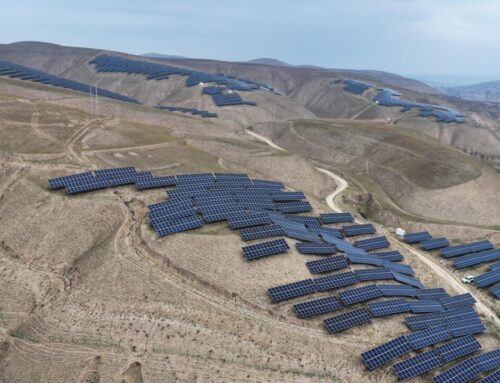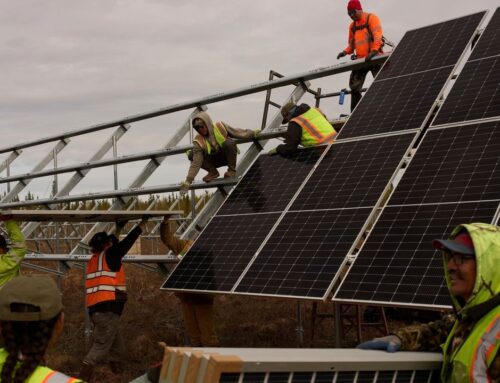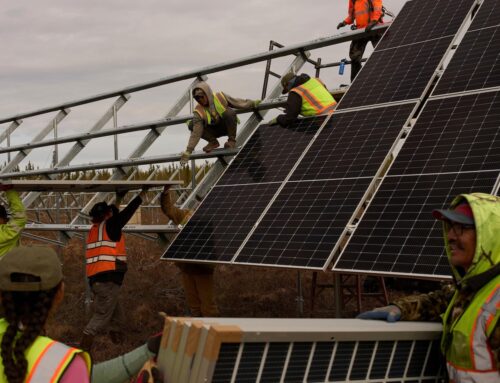Fernando de Noronha plans to become a fully sustainable sanctuary
November 11, 2025
As part of its ongoing decarbonization efforts, the archipelago has begun construction of a solar power plant. However, achieving full sustainability remains a challenge, with pressing issues such as inadequate sanitation infrastructure and overcrowding still to be addressed
/i.s3.glbimg.com/v1/AUTH_37554604729d4b2f9f3eb9ad8a691345/internal_photos/bs/2025/B/s/0iEyL9Q8erDOHA4X5rBw/fernando-de-noronha-divulgacao.jpg)
The archipelago of Fernando de Noronha—known for its crystal-clear waters, rich biodiversity, and status as one of Brazil’s most coveted tourist destinations—has undergone major transformations in recent years, with advances in water supply, energy, and telecommunications. These developments are part of the island’s broader goal to become a 100% sustainable destination. Yet, challenges such as overcrowding, an inadequate sewage system, and supply chain constraints continue to test the ecological sanctuary’s balance.
On Saturday (8), the island took another step toward decarbonization. In a ceremony, Neoenergia launched construction of the Noronha Verde solar power plant, which will replace the diesel-fueled Tubarão thermal plant. The new facility will include energy storage systems to supply the island at night and is expected to begin operations in early 2027, with total investments of R$350 million.
With the project, Neoenergia expects to achieve up to 85% decarbonization of the archipelago. The solar plant will also enable the island’s electric vehicles to operate without reliance on fossil fuels.
Fernando de Noronha also plans to prohibit combustion-engine vehicles from entering the island. Originally scheduled for this year, the ban will now take effect in August 2030. The law, approved in 2023, was extended by the state government to allow time for infrastructure expansion. Twelve charging stations are currently available for electric vehicles, with additional ones expected as demand grows.
Part of the island’s transition to electric mobility has come through Neoenergia’s long-running Trilha Verde (Green Trail) project, which includes two small solar plants with a combined capacity of 100 kilowatts-peak (kWp) and battery systems that power 18 electric vehicles used for tourism, local administration, and company operations.
Fernando de Noronha comprises 21 islands covering a total area of 26 square kilometers, located roughly 540 kilometers from Recife and 360 kilometers from Natal. Once home to a prison and a federal territory between 1942 and 1988, the archipelago returned to Pernambuco’s jurisdiction under the Federal Constitution. Like Brasília, Fernando de Noronha is not a municipality but a district administered by the Pernambuco state government.
An agreement signed in March 2023 established joint management of the Fernando de Noronha archipelago between the federal and state governments, setting clear targets for environmental preservation and urban planning on the main island. Among its provisions, the pact limits the number of tourists to a maximum of 11,000 per month and 132,000 per year.
According to Virgílio Almeida, the island’s administrator, Noronha could host more visitors if infrastructure expands in a way that supports increased demand without compromising the environment or public services. “There are R$500 million in investments currently underway on the island,” he said.
The main island—where all social and economic activity is concentrated—covers 18.6 square kilometers and has approximately 3,200 residents, according to the 2022 census.
Since 1989, all visitors have been required to pay an environmental preservation fee based on the length of their stay. In 2025, the cost is R$101.33 per day per person, or R$7,145.46 for a 30-day visit. The funds are used to maintain the island’s infrastructure.
Designated a UNESCO World Natural Heritage Site in 2001, Noronha is divided into two conservation areas, both managed by the Chico Mendes Institute for Biodiversity Conservation (ICMBio). One is the Marine National Park, which allows limited visitation to certain zones through a reservation system, while other areas remain strictly protected.
The second is the Fernando de Noronha Environmental Protection Area (APA)—Rocas, São Pedro, and São Paulo. This area covers 30% of the archipelago and includes the developed regions where inns, restaurants, schools, and the local hospital are located. It also encompasses the pristine Atol das Rocas.
According to local inn owners and tour operators, the island is now focused on achieving carbon neutrality, following the successful stabilization of its essential infrastructure. Electricity supply has become reliable over the years, and air connectivity has improved with three airlines now operating regular flights, reducing dependence on smaller aircraft. The most recent enhancement, they note, is the arrival of Starlink—Elon Musk’s satellite internet service—bringing faster and more stable connectivity to the archipelago.
The main telecommunications operators serving Fernando de Noronha maintain 24 antennas providing telephone and mobile internet coverage. According to Conexis Brasil, the region continues to receive infrastructure upgrades to improve connectivity and service quality for residents and tourists alike. “Telecommunications operators have maintained high levels of investment in expanding and improving the quality of connectivity in Fernando de Noronha and across the country,” the association said.
As services have improved, the supply of accommodations has expanded. There are now an estimated 200 inns and hotels on the island, ranging from large-scale facilities to small, family-run establishments, according to Fabiana de Sanctis, president of the Fernando de Noronha Inn Association (APFN), which represents 29 properties.
Despite this growth, challenges remain—chief among them, overcrowding and insufficient sewage infrastructure. In July, the Pernambuco government announced a R$21 million investment to expand the capacity of the Boldró Sewage Treatment Plant. The funds will be used to install a new main collector, increasing sewage coverage from 63% to 70% and boosting treatment capacity to 12 liters per second—nearly six times the current level, according to Noronha Mr. Almeida.
On December 18, the Pernambuco government plans to hold an auction for the concession of water and sewage services across the state. The notice divides the system into two lots, with Fernando de Noronha included in the one encompassing 150 municipalities, including Recife.
However, the infrastructure still lags behind demand. “More and more inns and rental houses are being built, but we don’t have the sanitation system to support that,” says Ms. Sanctis.
Sanitation needs to improve even with the ongoing projects and cooperation with state authorities, agrees Mário Douglas Fortini, environmental analyst and coordinator of land-use planning at ICMBio in Fernando de Noronha.
According to Mr. Fortini, the island’s greatest challenge is controlling the number of people arriving by air or sea. He notes that on an island covering just 18 square kilometers, traffic congestion has become a visible symptom of unrestrained growth. “There are more cars here than anyone imagines. This growth wasn’t well planned—it wasn’t carefully thought through,” he says. Currently, new vehicles can only enter the island as replacements for older models already registered to residents.
On a more positive note, Mr. Fortini highlights that several regulatory mechanisms are now being re-evaluated under the new shared management structure between the federal and state governments. “Today, we have far more tourists than we should,” he says, “but the framework is in place to start addressing that imbalance.”
Camilla Barretto, president of the Brazilian Luxury Travel Association (BLTA), says Fernando de Noronha’s tourism industry has expanded significantly in recent years, driven by improvements in infrastructure. Two decades ago, family-run inns were virtually the only lodging option. Beatriz Belich, managing partner of Pousada Maria Flor, notes that the growing number of restaurants has diversified the island’s hospitality scene. However, it may also prompt visitors to explore different establishments rather than returning to the same ones.
According to Ms. Barretto, most businesses on the island are becoming increasingly mindful of sustainability, introducing initiatives such as rainwater harvesting and treatment. “The conversation around sustainability is becoming part of everyday business,” she says. “Companies are implementing small but impactful measures—like waste sorting, installing solar panels, and reducing plastic use—that collectively make a big difference.”
Ms. Belich adds that Maria Flor supports NGO-led projects focused on species preservation and environmental education. “We believe these initiatives are becoming increasingly valued by guests,” she says. “They help strengthen our competitive edge as a preferred accommodation choice.”
Despite the progress, challenges remain. Ms. Sanctis points out that the island still produces very little beyond small-scale garden crops. Fuel, food, medicine, and clothing—all essential supplies—must be shipped from the mainland. “The supply chain is still far from ideal,” she says.
Recent shipwrecks have worsened the situation, further disrupting deliveries. “We need more flights and cargo options at more affordable prices,” says Ms. Belich. While maritime transport capacity has improved with additional vessels, the island continues to rely heavily on aviation.
In the past, Noronha was served mainly by single-engine and small aircraft. Today, Governador Carlos Wilson Airport accommodates commercial flights from Recife, Natal, and São Paulo on its 1,845-meter runway. The airport is currently undergoing expansion and modernization, with completion scheduled for late 2026.
The airport in Fernando de Noronha was awarded to Dix Aeroportos, part of the Agemar Group, in November 2021. The passenger terminal is currently receiving R$57 million in investments to triple its size—from 1,000 to 3,000 square meters. According to Manoel Ferreira Neto, director of the Agemar Group, the growing flow of tourists has made the existing terminal too small. The expansion will create more space for airport infrastructure and commercial outlets, serving passengers arriving on an average of five flights per day.
“I would even have the capacity to handle more flights, but we won’t increase traffic because of the management plan,” he said, referring to the cap of 11,000 visitors per month.
In October 2022, the airport’s operations were restricted after the National Civil Aviation Agency (ANAC) banned large aircraft from landing and taking off. In March this year, ANAC temporarily lifted the restriction, allowing larger planes to resume operations. However, after several incidents in June in which aircraft became stuck on the runway, the agency reinstated limits on landings and takeoffs. The state government completed runway repair work in August, and operations have since returned to normal.
According to Mr. Neto, additional work remains on the runway shoulders, though it does not interfere with current operations. The project is expected to be fully completed by March 2026. Mr. Almeida confirmed that one of the taxiways will be delivered shortly.
The new terminal will feature modern upgrades, including LED lighting and an air-conditioning system in the arrival and departure lounges, while the main lobby will maintain natural ventilation. It will also incorporate a water reuse system. Mr. Neto says Dix Aeroportos is negotiating an electricity contract through the free energy market, allowing the company to select its own supplier. In the future, the airport plans to install its own solar power plant.
Translation: Todd Harkin
Search
RECENT PRESS RELEASES
Related Post




